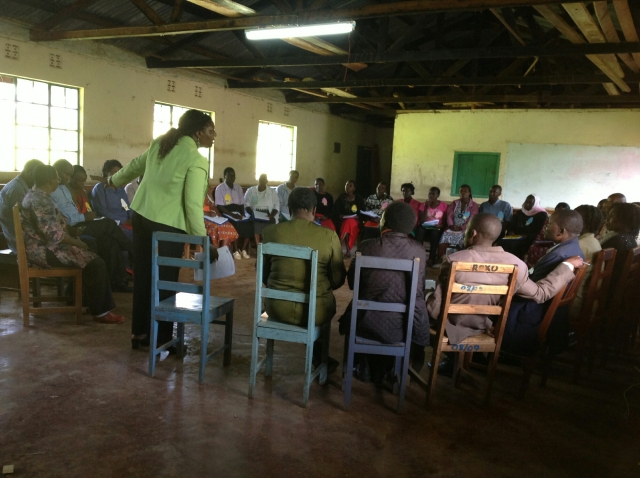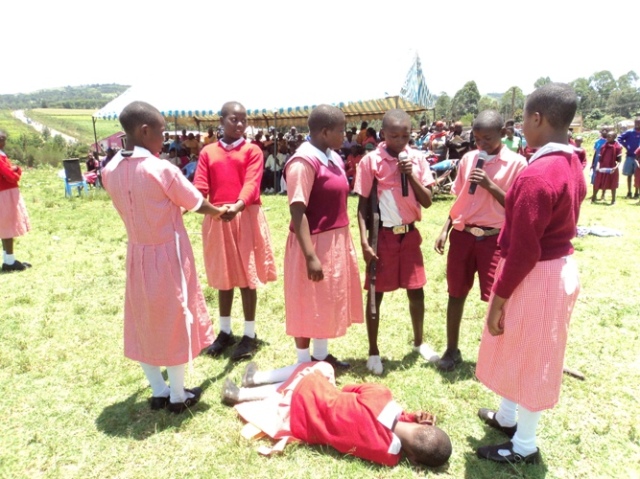Available data from the Kenya Demographic Health Survey (KDHS)2014 shows Kisii county having the second highest prevalence of female genital mutilation at 84.4%per cent followed by the Maasai at 76% while the Somali leading at 93.6%.
Statistics show that 8 out of every 10 girls were subjected to FGM but this could soon change as an emerging number of survivors have opened up on the disadvantages and their current woes for going under the knife.
FGM in this community is stated as a pre-requisite for any woman seeking to make them’marriageable and respectable’ and is reportedly said to help them control sexual desires before marriage and ensure fidelity (especially within polygamous marriages).
Cutting was done with celebration but has recently become secretive due to prohibition and strict penalties facing perpetrators of FGM.
Traditionally FGM was performed from 15 years in preparation for marriage but now it’s typically performed on girls aged 8-10 years. The most common is Type one, Clitoridectomy, where the hood of the Clitoris is cut off.

Dr. Grace Okong’o training participants at hall in Borabu, Kisii County.
FGM in this community is also a popular means of additional income for nurses and midwives.
Medicalization of FGM among the elites in Kisii still remains the biggest challenge. The elites uphold this practise by underplaying the reason that equipment used and the pain experienced can be tackled by performing FGM in clean environs by medical officers and nurses. A move that has been prohibited by the Health Ministry. Any medic caught abetting FGM will have his/her lisence revoked.
Hope Foundation for African Women is a non governmental organization that has deployment a different approach to help curb the practice in Nyamira County, Kisii .
HopeFAW was launched in 2011, it uses Popular Education (Education for critical consciousness) technique to inspire the local community and drive them to action.
The module evokes deep conversation by creating an environment that people can trust each other and share ideas /experiences. Participants are challenged to do some soul searching.
Dr. Grace Okong’o founder of the organization calls it “The methodology that penetrates inside people’s hearts” Hailing from this community, she understands her people well and she knows how to drive them to action.
The organization works with the local committee that includes chiefs, teachers, police, health officials, church leaders, gender office and county representatives of Borabu Sub County.
Through training, Hope Foundation teaches Women their Rights linking FGM to abuse of human rights and the fact that the practice is constitutionally unlawful.
Dr. Grace Okong’o crowning jubilant graduand’s.
They explain to them how the tradition is holding them back contributing to poverty and under development, comparing them to their neighbouring community, the Luo who are learned and are economically stable since they don’t practice FGM.
The trainers are also taught skills that empower them economically. The training is done for six months. They too learn how to become activists using a work plan and objectives which they use for campaign and economic activity. After training, they graduate and are awarded certificates.
The foundation also incorporates men. Men in Kisii are known to be very rigid. Since it’s a patriarchal society where decisions have to be made by the men, Grace learns how to involve them in the campaign without infringing on their beliefs.
The training aims at teaching them how to respect and involve their women in decision making. And why they should spare their daughters from the cut.
Primary schools have also been their main target. They empower children to speak. The children learn the effects of FGM and grow up knowing it is wrong.
Pupils of Matutu SDA primary school acting a play on effects of FGM.
FGM in Borabu Sub County is almost no more. Grace hopes to take the campaign to the whole of Kisii with the right support. I believe if this module is pasted to other FGM prevalent regions. We can completely wipe it out in Kenya.
For more information about Hope Foundation please visit their website



This is an amazing narrative, very inspiring. From what am getting everyone has a role to play in ending FGM in Kenya. Keep up with the good work.
LikeLiked by 1 person
Thank you Brian. Let’s put together our efforts
LikeLike
Activists from kisii please get in touch with Grace. Let’s work together. Visit her website for more information.
LikeLike
Lorna I really like your work this are very true stastics and we need to do more to Endfgm, keep on good work
LikeLiked by 1 person
Thank you Francis, appreciated.We will indeed EndFGM in Kenya, in this generation!
LikeLike
fgm is harmful to put ladies.try as much to eradicate y.
LikeLike
try as much as possible to eradicate fgm.
LikeLike
We are trying our best! However we need more people on board. We need men to spearhead this campaign.. Join us please Amos..
LikeLike